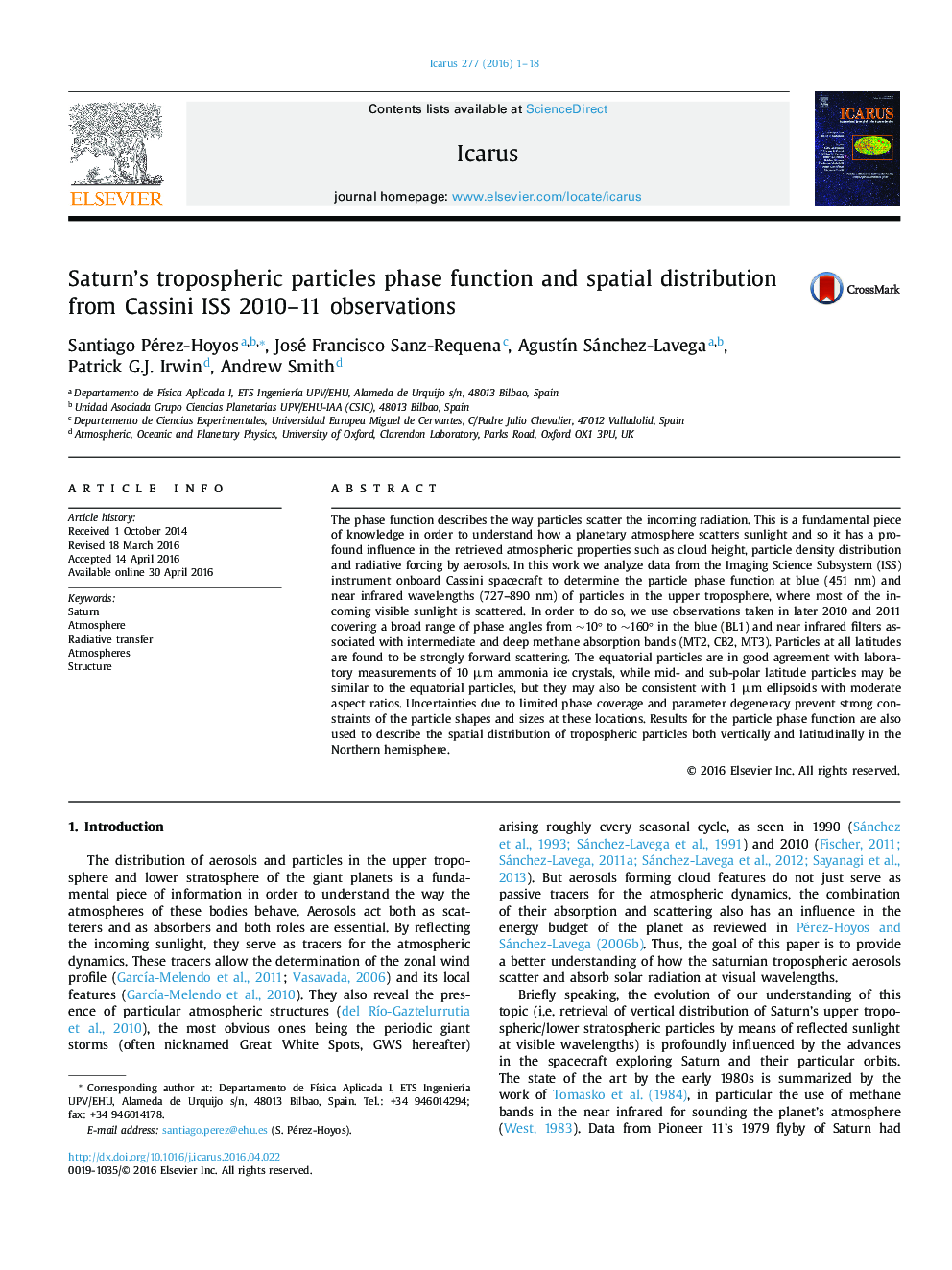| Article ID | Journal | Published Year | Pages | File Type |
|---|---|---|---|---|
| 8134865 | Icarus | 2016 | 18 Pages |
Abstract
The phase function describes the way particles scatter the incoming radiation. This is a fundamental piece of knowledge in order to understand how a planetary atmosphere scatters sunlight and so it has a profound influence in the retrieved atmospheric properties such as cloud height, particle density distribution and radiative forcing by aerosols. In this work we analyze data from the Imaging Science Subsystem (ISS) instrument onboard Cassini spacecraft to determine the particle phase function at blue (451 nm) and near infrared wavelengths (727-890 nm) of particles in the upper troposphere, where most of the incoming visible sunlight is scattered. In order to do so, we use observations taken in later 2010 and 2011 covering a broad range of phase angles from â¼10° to â¼160° in the blue (BL1) and near infrared filters associated with intermediate and deep methane absorption bands (MT2, CB2, MT3). Particles at all latitudes are found to be strongly forward scattering. The equatorial particles are in good agreement with laboratory measurements of 10 µm ammonia ice crystals, while mid- and sub-polar latitude particles may be similar to the equatorial particles, but they may also be consistent with 1 µm ellipsoids with moderate aspect ratios. Uncertainties due to limited phase coverage and parameter degeneracy prevent strong constraints of the particle shapes and sizes at these locations. Results for the particle phase function are also used to describe the spatial distribution of tropospheric particles both vertically and latitudinally in the Northern hemisphere.
Related Topics
Physical Sciences and Engineering
Earth and Planetary Sciences
Space and Planetary Science
Authors
Santiago Pérez-Hoyos, José Francisco Sanz-Requena, AgustÃn Sánchez-Lavega, Patrick G.J. Irwin, Andrew Smith,
